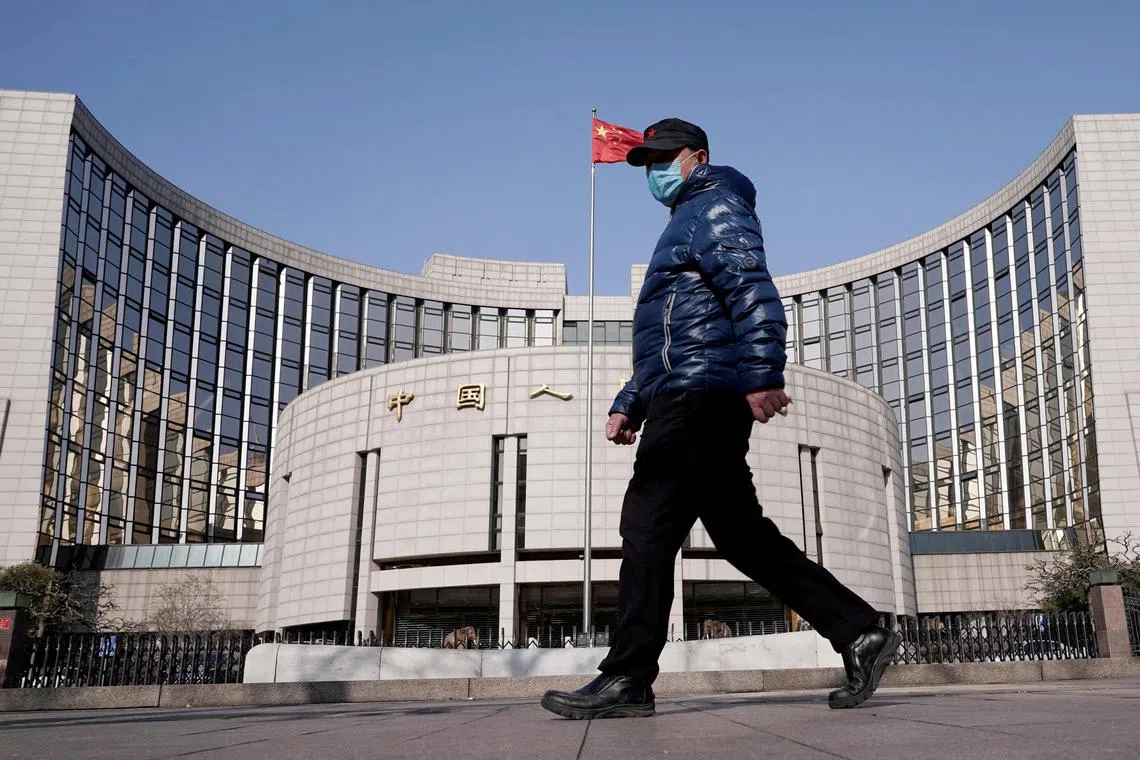China pumps $33 billion of cash into banks while keeping key rate on hold
Sign up now: Get ST's newsletters delivered to your inbox

Even as the PBOC keeps the policy rate steady, some smaller Chinese lenders cut deposit rates in April, moves that could improve their profitability and encourage more borrowing.
PHOTO: REUTERS
Follow topic:
BEIJING – China injected the least amount of medium-term cash into the banking system since November, a sign that policymakers are watching the effects of past easing steps as the nation’s economic recovery appears to be on track.
China’s efforts to ensure there is enough liquidity in markets may help stabilise borrowing costs, which are under pressure to rise as a recovering economy boosts demand to raise funds.
The People’s Bank of China (PBOC) offered 170 billion yuan (S$33 billion) of funds to banks through a medium-term lending facility, resulting in a 20 billion yuan net injection in April, the smallest since November.
It also left the interest rate unchanged at 2.75 per cent, the eighth month for it to stand pat, as expected by a majority of economists and analysts in a Bloomberg survey.
The smaller liquidity provision indicates the PBOC is evaluating the impact of its March easing, when it had both cut a banking reserve ratio and provided more cash to support growth.
Data in March indicated that an economic recovery is taking off,
“The outcome is in line with expectation for a small upsize. While we have long pencilled in a potential small rate cut this year, a cut does not seem to be imminent,” said Ms Frances Cheung, a rates strategist at OCBC Bank.
China’s economy is rebounding, and the growth target of around 5 per cent in 2023 could be achieved as the property market improves, PBOC governor Yi Gang said during a Group of 20 meeting last week.
The net injection via a medium-term lending facility in April marked the fifth month in a row that the central bank has taken such action.
The PBOC also cut the required reserve ratio for lenders in March, and that may have unleashed about 500 billion yuan of long-term funds into the financial system.
Banks cut rates
Even as the PBOC keeps the policy rate steady, some smaller Chinese lenders cut deposit rates in April,
China’s interest rate self-disciplinary mechanism, a regulatory body overseen by the PBOC, has adjusted the assessment method for banks in 2023 in a move to urge lenders to lower deposit rates, the 21st Century Business Herald newspaper reported.
The central bank, in a statement posted on Friday on its first-quarter monetary policy meeting, said that the economy is recovering and refrained from repeating the line from the previous conference that there are “three pressures” – contracting demand, supply shocks and weakening expectations – on the economy.
It also omitted the phrasing of counter-cyclical adjustment, in what some analysts regarded as a signal of narrowing chances for further loosening.
Immediate tightening is unlikely as well, as the PBOC has said that the foundation of economic recovery is “not solid yet”, adding that credit growth will be kept “reasonable”. BLOOMBERG

